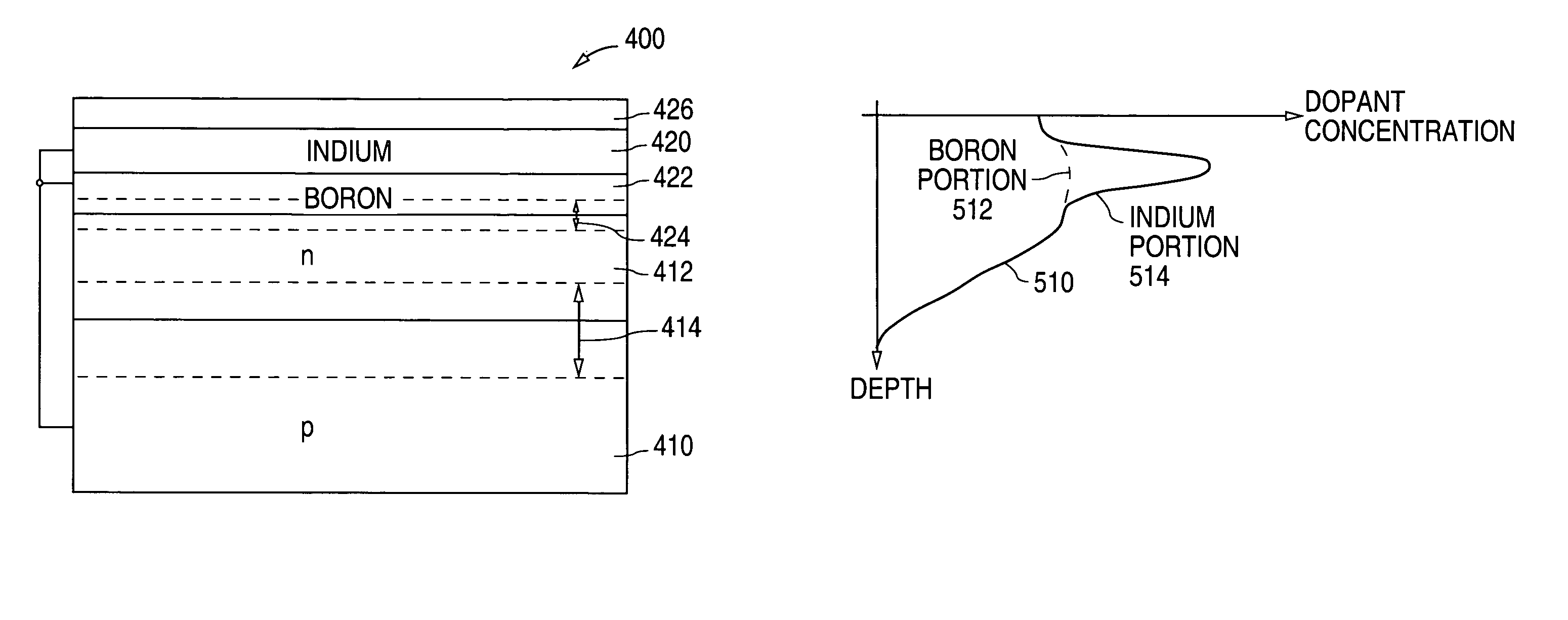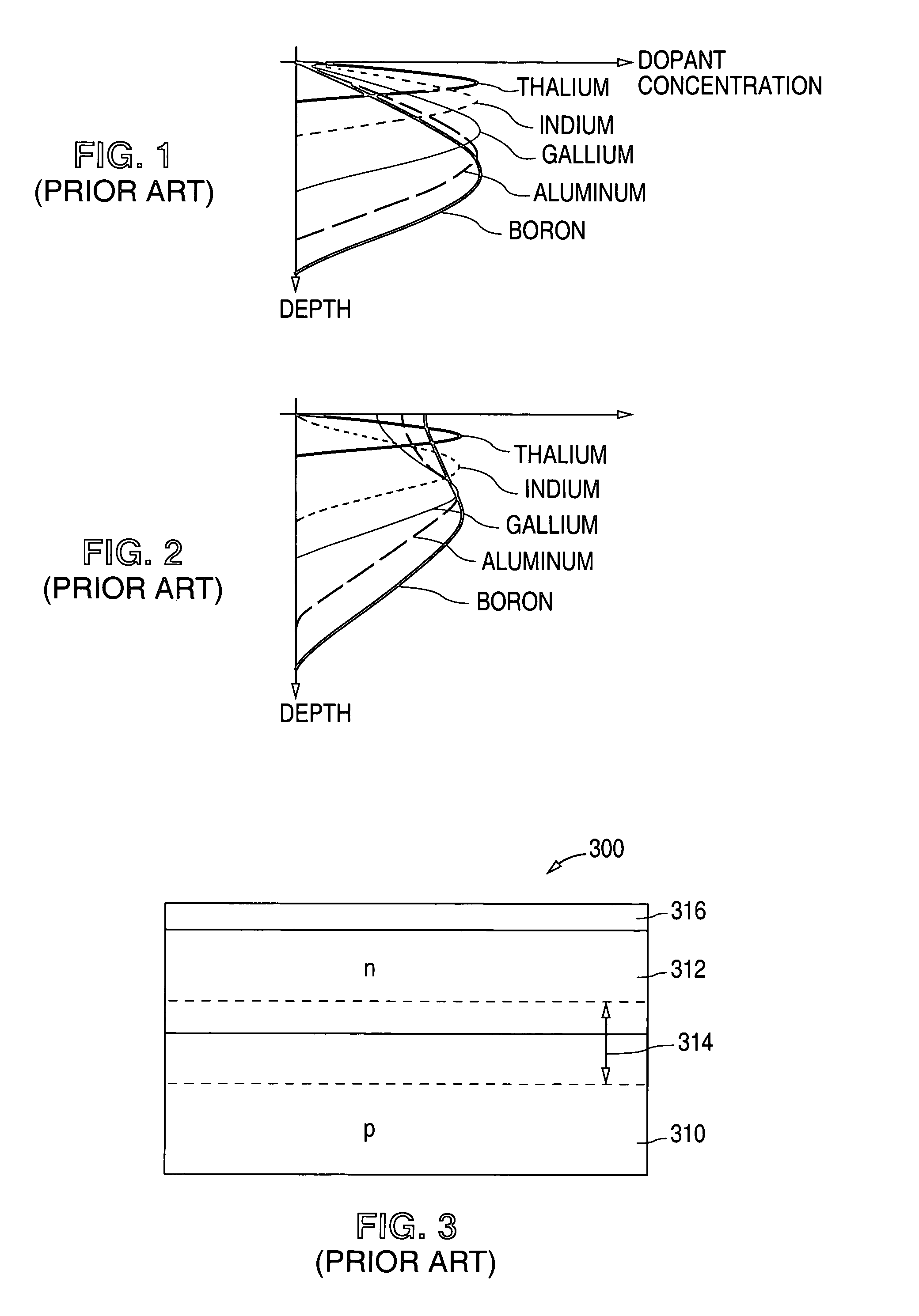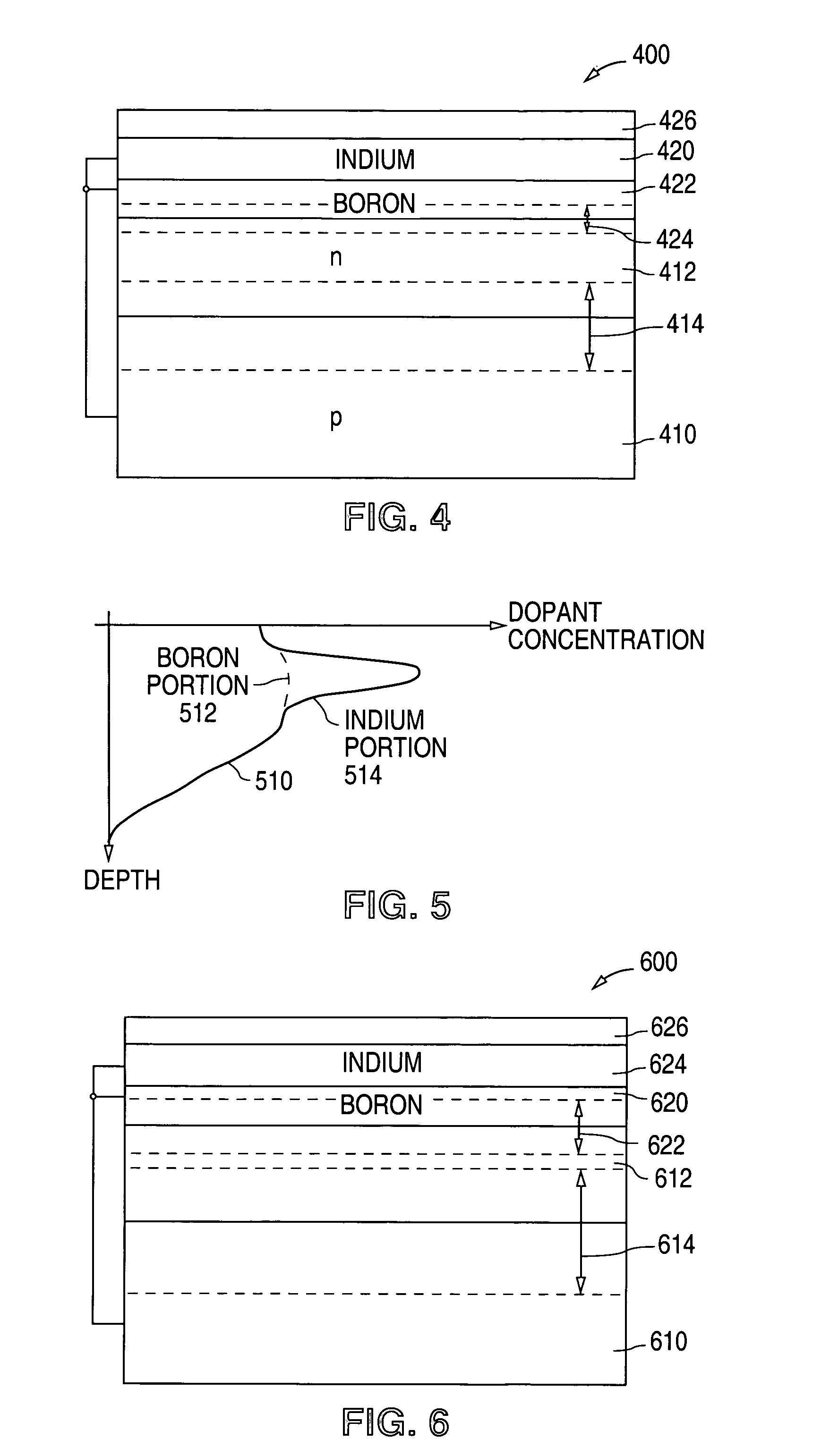Photodiode that reduces the effects of surface recombination sites
a photodiode and surface recombination technology, applied in the field of photodiodes, can solve the problems of limiting the photodiode to only collecting a single color, increasing the magnitude of the integrated voltage, and reducing the total number of collected electrons
- Summary
- Abstract
- Description
- Claims
- Application Information
AI Technical Summary
Problems solved by technology
Method used
Image
Examples
Embodiment Construction
[0028]FIG. 4 shows a cross-sectional diagram that illustrates an example of a blue photodiode 400 in accordance with the present invention. As described in greater detail below, blue photodiode 400 utilizes a p-type surface region to form a barrier that repels photogenerated electrons from the surface electron-hole recombination sites.
[0029]As shown in FIG. 4, blue photodiode 400 includes a first p-type (boron) region 410, such as a substrate, a second n-type region 412, such as an epitaxial layer or well, that overlies and contacts p-type region 410, and a depletion region 414 that is formed across the pn junction between p-type region 410 and n-type region 412.
[0030]In the present example, n-type region 412 has a moderate dopant concentration, such as 5×1017 to 1×1018 atoms / cm3, that is approximately equal to the dopant concentration of a lightly-doped-drain (LDD) region. Alternately, n-type region 412 can be formed to have a heavier (n+), e.g., 1×1019 to 1×1020 atoms / cm3, (or lig...
PUM
 Login to View More
Login to View More Abstract
Description
Claims
Application Information
 Login to View More
Login to View More - R&D
- Intellectual Property
- Life Sciences
- Materials
- Tech Scout
- Unparalleled Data Quality
- Higher Quality Content
- 60% Fewer Hallucinations
Browse by: Latest US Patents, China's latest patents, Technical Efficacy Thesaurus, Application Domain, Technology Topic, Popular Technical Reports.
© 2025 PatSnap. All rights reserved.Legal|Privacy policy|Modern Slavery Act Transparency Statement|Sitemap|About US| Contact US: help@patsnap.com



